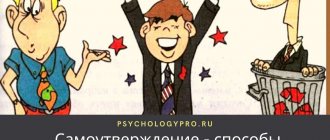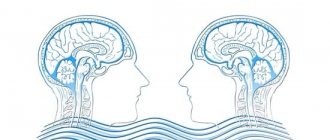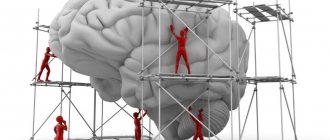The term “trigger” is now actively used in many areas. A very capacious concept that denotes a pain point, a provoking factor, a phenomenon or event that puts something into action. A trigger in psychology is, in simple terms, a “trigger” of a person’s sharp emotional reaction. The more powerful the impact on consciousness, the brighter the emotional outburst.
Psychological triggers influence our behavior, often provoking impulsive actions. Therefore, it is worth learning to recognize and control them in order to prevent manipulation of consciousness and behavior.
What is a trigger?
A trigger is an event that triggers a certain emotional reaction in a person. Sometimes this reaction is so powerful that it provokes unpredictable actions that are devoid of logic and meaning in the given circumstances.
In English, the word trigger is translated as “switch”, “impulse” or “trigger”.
Typically, a trigger in psychology is viewed as a negative phenomenon , since it forces a person to commit impulsive actions with undesirable consequences. But the opposite situations are also possible, when under the influence of emotions a person receives powerful motivation to achieve goals.
A trigger occurs when a person experiences a familiar feeling or combination of feelings. The trigger can be a rare smell of perfume, a long-forgotten melody, the taste of food or drink, a combination of colors, certain tactile sensations, or any other feeling.
At the same time, the person’s perception changes, and he returns to the emotional state in which he formed this trigger. At such moments, his perception is greatly distorted, and he is capable of inappropriate actions, which he himself cannot subsequently explain.
Emotions
Emotions are one of the most striking phenomena that clearly reflect a person’s mental states. But what do we know about them?
If you turn to official sources, you can find the following description of emotions:
Emotion is an emotional process of short duration, which reflects a person’s evaluative attitude towards existing or possible life situations. In psychological science, emotions are distinguished from other emotional processes such as moods, feelings and affects. However, the presented definition should not be considered exhaustive and generally accepted, because The phenomenon of emotions, even in our time, has been studied extremely poorly and different researchers can interpret its definition in different ways.
But here’s what is known for sure about emotions: as a rule, emotions arise when there is some kind of external stimulus. In other words, before the appearance of an emotion, a person’s sense organs (nose, ears, eyes, tongue, skin) always receive some signal from the outside world. After this, the information received by the senses is transferred to the brain, and at the next stage this information is transformed into an emotion, which can manifest itself both on the internal and external levels.
External stimuli (sources of signals from the outside world) can include smells, taste sensations, phenomena of the surrounding world and events in it (for example, a holiday or an accident), good or sad news, stories heard, seen or read, anecdotes, etc. . Those. everything that can have any effect on a person and his body. Thus, emotions are directly related to external stimuli. These external stimuli are called triggers. These triggers set into motion another group of triggers called psychological ones.
How do triggers work?
The manifestation of this psychological phenomenon depends on factors such as personality type, mood, current life circumstances and the state of the nervous system. The trigger is triggered when a specific stimulus appears. At the level of sensations, a person feels that his mood has changed noticeably, but this cannot always be explained.
To understand what a trigger is and how it works, let's consider a typical situation that psychologists often encounter - the consequences of a car accident. During such upheavals, the human brain attaches special significance to all events that occur, associating them with danger.
The squeal of brakes is usually especially memorable - a sharp sound a split second before a collision. If a person has been in a car accident, then in the future this trigger will be triggered, even if the person hears the squeal of brakes, knowing that he is safe (for example, if he is at home and a car has stopped on the road outside the window).
Negative and positive sides
The negative impact of a stimulus response is stronger than the positive one. It can have a destructive effect, even leading to madness. The individual instinctively strives to avoid negative experiences. When they overtake him, he cannot defend himself against them. Destructive influence, especially if it is prolonged, removes behavioral barriers. The individual, without wanting it, becomes asocial and dangerous.
A positive response engages the part of the brain associated with pleasure. When an individual sees a stimulus that evokes pleasant memories, he relives them. Looking at or smelling delicious food makes him feel hungry. The stimulus response acts as a reminder of a vital need and is formed without additional influence. Other stimuli that are not necessary do not arise independently. They need to be called specifically during therapeutic practice.
Common Triggers
In addition to the example discussed with a person who survived a car accident, there are other triggers that occur quite often. Many of them are not associated with shocks, but affect our behavior in certain situations.
The most common triggers include:
- Human scream
.
A loud scream provokes a surge of adrenaline because it is associated with danger. This reaction occurs instantly - much faster than we have time to assess the situation and understand who shouted and why; - A dog growling or barking. This trigger occurs in people who have been attacked by a dog in the past. Such an event can leave a deep emotional mark, and in the future, hearing a dog growl or bark, a person will fall into a state of anxiety;
- A line or crowd showing interest
.
Seeing a large queue or simply interested people, we also experience strong interest, afraid of missing something important; - Feelings associated with important memories
.
A melody, taste or smell can evoke a feeling of nostalgia, making you remember your first kiss, prom dance or other powerful emotion.
The influence of most triggers ceases almost immediately after the stimulus disappears or it is realized that the reaction was erroneous. For example, having realized that a child screamed for joy, we immediately perceive his cry differently. In psychology, such a trigger is called neutral because it does not entail serious consequences.
Triggered - they got you
The term literally means a person who has been “gotten.” The trigger has worked, you give in, get wound up and walk “on edge”. The term gained popularity after things like memes spread on the internet.
Most often, these three-dimensional pictures (memes) convey negative emotions when a person is “turned on.” The first picture shows a trigger - a provoking factor, it can be a word or an object; pictures 2 and 3 already show the triggered reaction.
At first, it was a joke among bloggers aimed at people who exhaust themselves with diets, or, conversely, cannot lose weight. When the bloggers' jokes turned to the feminist movement, the triggered person appeared - Chanti Binks, a red-haired girl with glasses.
Each of us has something that can be “triggered” or, in Russian, something to mock and ridicule. The question is whether such evil jokes are necessary that increase hatred, irritation and melancholy. Maybe it’s better for bloggers to focus their energy on making the Internet cleaner and better, and not turn it into a trash heap???
This is what it is - a trigger, in simple words and not so much, in medicine and copywriting. If the material was useful to you, you liked the article, do not forget to rate it and share it on social networks, with respect, S.K.
Undesirable consequences of triggers
Most of the triggers we encounter are neutral and have little or no impact on our quality of life. But some may cause unwanted effects, such as:
- Loss of control over emotions
.
Under the influence of a trigger, you can do a bad thing or offend a person. - Susceptibility to other people's influence
.
Even an adult, in certain circumstances, can perceive another person as a mentor and be influenced by him. - Spontaneous purchases
.
Marketers often use promotions, artificial hype, fake discounts, and other triggers to get people to make unnecessary purchases. - Deterioration of health
.
Strong experiences can have a noticeable impact on well-being, reduce immunity and even lead to the development of chronic diseases.
A trigger can become a dangerous psychological trap. Sometimes a person falls into it on his own, but it also happens that all kinds of scammers and schemers try to take advantage of these vulnerabilities in our psyche. Therefore, it is important to promptly recognize the impact of the trigger and get rid of it in all available ways.
In marketing
It is triggers that are the salvation for many companies and stores. After all, with their help you can increase sales, achieve popularity and demand among customers. If you skillfully use triggers to influence people's decisions, you can make any product profitable and sellable.
But it is always worth remembering that all people are different. For this reason, different approaches are required. Someone may turn their attention to a product in a hurry when another person is attracted by the promotion or emotional component. According to statistics, it is the latter that becomes the predominant argument.
Many marketers in the modern world study triggers to influence buyers, motivating them to make a particular purchase.
Video about what triggers are on the site:
How to get rid of a trigger?
There are different ways to deal with dangerous triggers. A radical way to solve the problem is treatment under hypnosis. A psychologist helps to get rid of difficult memories that prevent a person from living a normal life and make him vulnerable to scammers and schemers.
In simpler cases, you can minimize the impact of the trigger yourself using the following recommendations:
- Take time to make informed decisions
.
This should be done in everyday life, regularly analyzing your actions to understand to what extent this is an independent decision. - Analyze your emotions
.
Every time you experience strong feelings, keep track of what caused them. - Work on inner harmony
.
This is an important aspect of self-improvement. If a person is healthy, calm and balanced, the trigger will not be able to push him to impulsive actions. Therefore, pay attention to all aspects of self-development: read, eat well, exercise, meditate, get enough sleep, develop cognitive abilities. - Analyze the past
.
Repressed painful memories are the main cause of dangerous triggers. It is difficult to remember and analyze unpleasant events, but this will help you free yourself from accumulated pain and avoid falling into psychological traps in the future.
Impact on the individual
If the response to the trigger does not cause a strong emotional experience and the individual experiences only mild anxiety or a vague feeling of anxiety. These sensations are not perceived as a problem. Severe symptoms of a stimulus response that come on suddenly and instantly can be a problem. When faced with a stimulus, the individual experiences:
- lack of air;
- pain, burning in the chest;
- trembling fingers;
- fainting state;
- dizziness and nausea;
- a sharp increase in pressure;
- Strong headache;
- feeling of fear, helplessness.
The stimulus response can be compared to a pain syndrome. It is often unpleasant and even dangerous to feel, but it shows that something is wrong with the body. A trigger is a symptom of a psychological problem. If a person did not have such a mechanism, he would not be able to recognize the problem.
Other meanings of the word "trigger"
We have discussed what a trigger is in psychology, since it is used most often in this meaning. However, as we have already said, there are several more definitions of the word “trigger”, which include:
Trigger in medicine
Among doctors, not only psychologists and psychiatrists actively use this term. In medicine, a trigger is a factor that provokes an undesirable process in the body (for example, an asthma attack or migraine). Triggers can be weather conditions, food consumed, severe stress and other external influences on the body.
Another type of “trigger” in medicine is trigger points. They are areas in muscle tissue that have undergone spasm and have increased sensitivity to external influences.
Trigger in electronics
This term in microelectronics and circuitry designates the most important element - a special electronic key that locks in one of two positions. These positions are designated as 0 and 1 or "True" and "False". The processor of any modern computer or smartphone consists of millions of triggers interconnected into logical circuits.
The main feature of an electronic trigger is the ability to remain in one of the specified states indefinitely. At the same time, it is capable of instantly switching between these states by a single signal from the outside.
Trigger in marketing
Any marketer knows perfectly well what a trigger is, since for him it is one of the most important tools for making sales. In their work, marketers actively use psychological traps that force buyers to make irrational decisions and make unnecessary purchases. Sometimes they build entire chains of triggers that gradually lead the potential buyer to a certain decision.
The most common triggers in marketing:
- Hit . The buyer decides that the product is really good, since it is so popular, because other people will not just throw away money on an unnecessary thing.
- Promotion
.
Most of the techniques associated with promotions are based on buyers' ignorance of real prices. But this does not cancel the magical effect of the inscriptions “3 for the price of 2” or “80% discount!” Even sensing a catch, a person does not want to miss such a benefit and makes a purchase. - Artificial deficiency
.
Marketers often claim that a product is about to run out, or use timers like “59 minutes left until the end of the promotion.” People are afraid that they won't have time and make a thoughtless purchase. Despite the hackneyed nature of this technique, it is still effective.











